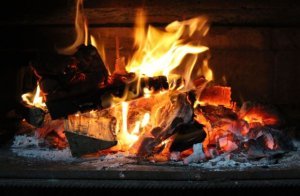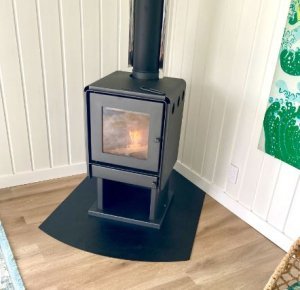The heat is on
When it comes to buying a new home, checking out what sort of heating it has (or doesn’t have!) is important info to know. After all, a warm home is vital for your health and comfort, and going into it blind can really put a ‘dampener’ on your love of your new place!
There are many different ways to heat a home, from modern systems like heat pumps and underfloor heating, to traditional means like fireplaces, wall panels and gas heaters. So let’s take a look at the pros and cons of the heating most commonly seen in NZ houses.
Heat pumps
Heat pumps are a type of central heating system that uses electricity to move heat from one place to another. They can be used to heat your home in the winter, with the advantage of also cooling it in the summer. Heat pumps are generally considered to be a very efficient source of heating, so they can save you money on your energy bills. However, they can be expensive to install and do need servicing.
Panel wall heaters
Panel heaters are an inexpensive type of electric heater mounted on the wall. They provide background warmth and can be a good choice for bedrooms or rooms that need heating overnight. Many have thermostats and timers to regulate the heat. Some have fans which can be surprisingly noisy!
Underfloor heating
Underfloor heating uses hot water or electricity to heat the floor. It basically turns your floor into one big heater. While it can be comfy under your tootsies (especially in a bathroom in the dead of winter), it can be expensive to install. Underfloor heating can also be difficult to maintain – if it breaks it can be impossible and/or expensive to repair e.g. if it’s under a fully tiled floor.
Open fireplaces
You can’t deny the lure of an open fire, flames roaring in the grate, maybe a bowl of marshmallows to toast nearby… Sadly, while open fireplaces look inviting, they are not at all efficient, with only about 15% of the heat warming your room. The rest is all ‘going up in smoke’ (along with your heating budget) by escaping up the chimney. Open fireplaces can also be a fire hazard, so might not be practical for families with children and pets.

Image credit: Unsplash
Solid fuel burners
Solid fuel burners or wood burners are another type of traditional heating system, and usually have a high heat output. This makes them very energy efficient at around 60-80%. Solid fuel burners also require regular maintenance, such as cleaning and refuelling. Unless you have access to a free source of fuel, you’ll be paying for a wood delivery most years.

Image supplied
Gas heating
Gas heating is a type of system that uses natural gas to heat your home. In New Zealand gas can be a relatively inexpensive choice, depending on what region you live in. Gas heating is generally flued or unflued with flued gas heaters preferred over unflued. (We’ll tell you why in a minute).
Flued gas heaters have a pipe that serves as a chimney for taking away both emissions (that ‘gassy’ smell) and moisture. A good floor-mounted unit can be as energy-efficient as a heat pump, but heat pumps are usually cheaper to run.
Unflued portable gas heaters are the ‘old school’ moveable type that are dangerous to use, as they add loads of moisture back into the air, contributing to mould and dampness. They can even produce carbon monoxide if they’re faulty. Basically, steer clear, due to all these reasons PLUS the fact gas heating can be a fire hazard – they’re an accident waiting to be tipped over.
The bottom line
It is important to find out what heating source you’ll be dealing with before you purchase a home. Consider your insulation levels as well – homes with good insulation will require less energy to heat – but that’s a whole other blog!
If you’re unsure, just ask us. When you book a comprehensive report from your friendly Property Inspector, you get expert information and advice right from the get-go. Call us on 027 2939 808 for real peace of mind before you buy.








